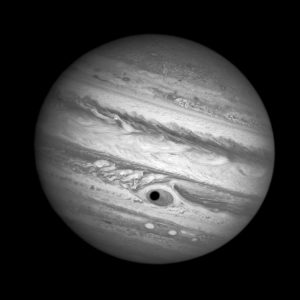
Washington, Sep 26 (EFE).- NASA said Monday that the Hubble space telescope has detected possible emissions of water vapor from Jupiter’s frozen moon Europa.
According to a communique released by the U.S. space agency, the orbiting telescope snapped images of what could be thin clouds of water vapor rising from the distant moon’s surface.
The discovery raises the possibility that future space missions to Europa will be able to analyze the ocean that lies underneath its frozen surface without having to drill through kilometers of solid ice, the U.S. space agency said.
“Europa’s ocean is considered to be one of the most promising places that could potentially harbor life in the solar system,” said Geoff Yoder, the acting associate administrator for NASA’s Washington-based Science Mission Directorate.
“These plumes, if they do indeed exist, may provide another way to sample Europa’s subsurface,” he added.
The detected emissions rose to an altitude of some 200 kilometers (about 125 miles) above Europa’s surface before the material contained in them evidently rained back down onto the moon. The ocean beneath the ice is estimated to contain twice the water in all of Earth’s oceans, although the thickness of the ice that covers it is unknown.
NASA scientists with the Baltimore-based Space Telescope Science Institute (STScI) team headed by William Sparks spotted the emissions while they were viewing one edge of the moon as it passed in front of Jupiter.
The original aim of Sparks’ team was to determine if Europa has a thin atmosphere – known as an exosphere – that could block some of the light reflected off of Jupiter’s clouds.
In 2012, a team from the Southwest Research Institute in San Antonio detected evidence of water vapor coming from Europa’s southern polar region and rising to an altitude of more than 160 kilometers (about 100 miles), and this new detection of water vapor around the moon bolsters the results of that study.
Both research teams viewed the moon with the Hubble telescope and came to the same conclusion, albeit using different methods.
Sparks said Monday that the “estimates” of the height of the emissions and the locations of two of them are similar to those obtained by the San Antonio team.
If the existence of water vapor emanating from Europa can be further confirmed, it will be the second moon in the Solar System where such emissions have been found.
In 2005, NASA’s Cassini space probe detected water vapor jets, along with dust, above the surface of Saturn’s moon Enceladus.
